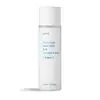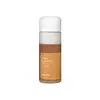What's inside
What's inside
 Key Ingredients
Key Ingredients

 Benefits
Benefits

 Concerns
Concerns

 Ingredients Side-by-side
Ingredients Side-by-side

Water
Skin ConditioningMilk Extract
Skin ConditioningGlycerin
HumectantCaprylic/Capric Triglyceride
MaskingNiacinamide
Smoothing1,2-Hexanediol
Skin ConditioningButylene Glycol
HumectantPanthenol
Skin ConditioningPolysorbate 60
EmulsifyingPentylene Glycol
Skin ConditioningArginine
MaskingAcrylates/C10-30 Alkyl Acrylate Crosspolymer
Emulsion StabilisingSteareth-21
CleansingDipotassium Glycyrrhizate
HumectantBetaine
HumectantAllantoin
Skin ConditioningCetearyl Alcohol
EmollientSteareth-20
CleansingIsohexadecane
EmollientEthylhexylglycerin
Skin ConditioningAdenosine
Skin ConditioningPalmitic Acid
EmollientStearic Acid
CleansingPEG-30 Dipolyhydroxystearate
EmulsifyingDisodium EDTA
Hydroxyethylcellulose
Emulsion StabilisingCaprylyl Glycol
EmollientPropanediol
SolventTocopheryl Acetate
AntioxidantHydrogenated Lecithin
EmulsifyingGlyceryl Acrylate/Acrylic Acid Copolymer
HumectantSucrose Stearate
EmollientSodium Nitrate
SoothingSodium Hyaluronate Crosspolymer
HumectantCeramide NP
Skin ConditioningHydrolyzed Glycosaminoglycans
HumectantArachidic Acid
CleansingSodium Hyaluronate
HumectantArtemisia Vulgaris Extract
Skin ConditioningBenzyl Glycol
SolventOleic Acid
EmollientMyristic Acid
CleansingLauric Acid
CleansingHydrolyzed Pea Protein
EmollientDisodium Phosphate
BufferingPhytosterols
Skin ConditioningHydrolyzed Hyaluronic Acid
HumectantCeramide AP
Skin ConditioningSqualane
EmollientOlea Europaea Fruit Oil
MaskingLecithin
EmollientCeramide As
Skin ConditioningHyaluronic Acid
HumectantCeramide Ng
Skin ConditioningSodium Phosphate
BufferingHydrolyzed Sodium Hyaluronate
Skin ConditioningButyrospermum Parkii Butter
Skin ConditioningGlycosphingolipids
EmollientSodium Acetylated Hyaluronate
HumectantHydroxypropyltrimonium Hyaluronate
Raspberry Ketone
MaskingWater, Milk Extract, Glycerin, Caprylic/Capric Triglyceride, Niacinamide, 1,2-Hexanediol, Butylene Glycol, Panthenol, Polysorbate 60, Pentylene Glycol, Arginine, Acrylates/C10-30 Alkyl Acrylate Crosspolymer, Steareth-21, Dipotassium Glycyrrhizate, Betaine, Allantoin, Cetearyl Alcohol, Steareth-20, Isohexadecane, Ethylhexylglycerin, Adenosine, Palmitic Acid, Stearic Acid, PEG-30 Dipolyhydroxystearate, Disodium EDTA, Hydroxyethylcellulose, Caprylyl Glycol, Propanediol, Tocopheryl Acetate, Hydrogenated Lecithin, Glyceryl Acrylate/Acrylic Acid Copolymer, Sucrose Stearate, Sodium Nitrate, Sodium Hyaluronate Crosspolymer, Ceramide NP, Hydrolyzed Glycosaminoglycans, Arachidic Acid, Sodium Hyaluronate, Artemisia Vulgaris Extract, Benzyl Glycol, Oleic Acid, Myristic Acid, Lauric Acid, Hydrolyzed Pea Protein, Disodium Phosphate, Phytosterols, Hydrolyzed Hyaluronic Acid, Ceramide AP, Squalane, Olea Europaea Fruit Oil, Lecithin, Ceramide As, Hyaluronic Acid, Ceramide Ng, Sodium Phosphate, Hydrolyzed Sodium Hyaluronate, Butyrospermum Parkii Butter, Glycosphingolipids, Sodium Acetylated Hyaluronate, Hydroxypropyltrimonium Hyaluronate, Raspberry Ketone
Water
Skin ConditioningHydrogenated Polydecene
EmollientGlycerin
HumectantButylene Glycol
HumectantPropanediol
SolventSaccharomyces/Xylinum/Black Tea Ferment
Skin Conditioning1,2-Hexanediol
Skin ConditioningSodium Chloride
MaskingHydroxyacetophenone
AntioxidantHydrogenated Lecithin
EmulsifyingEthylhexylglycerin
Skin ConditioningAmmonium Acryloyldimethyltaurate/Vp Copolymer
Citrus Aurantium Bergamia Fruit Oil
MaskingTheobroma Cacao Seed Extract
AntioxidantDisodium EDTA
Cellulose Gum
Emulsion StabilisingDextrin
AbsorbentArtemisia Princeps Leaf Extract
Skin ConditioningCamellia Japonica Flower Extract
EmollientGanoderma Lucidum Extract
Skin ProtectingHyaluronic Acid
HumectantHydrolyzed Hyaluronic Acid
HumectantSodium Hyaluronate
HumectantLimonene
PerfumingLinalool
PerfumingWater, Hydrogenated Polydecene, Glycerin, Butylene Glycol, Propanediol, Saccharomyces/Xylinum/Black Tea Ferment, 1,2-Hexanediol, Sodium Chloride, Hydroxyacetophenone, Hydrogenated Lecithin, Ethylhexylglycerin, Ammonium Acryloyldimethyltaurate/Vp Copolymer, Citrus Aurantium Bergamia Fruit Oil, Theobroma Cacao Seed Extract, Disodium EDTA, Cellulose Gum, Dextrin, Artemisia Princeps Leaf Extract, Camellia Japonica Flower Extract, Ganoderma Lucidum Extract, Hyaluronic Acid, Hydrolyzed Hyaluronic Acid, Sodium Hyaluronate, Limonene, Linalool
 Reviews
Reviews

Ingredients Explained
These ingredients are found in both products.
Ingredients higher up in an ingredient list are typically present in a larger amount.
1,2-Hexanediol is a synthetic liquid and another multi-functional powerhouse.
It is a:
- Humectant, drawing moisture into the skin
- Emollient, helping to soften skin
- Solvent, dispersing and stabilizing formulas
- Preservative booster, enhancing the antimicrobial activity of other preservatives
Butylene Glycol (or BG) is used within cosmetic products for a few different reasons:
Overall, Butylene Glycol is a safe and well-rounded ingredient that works well with other ingredients.
Though this ingredient works well with most skin types, some people with sensitive skin may experience a reaction such as allergic rashes, closed comedones, or itchiness.
Learn more about Butylene GlycolDisodium EDTA plays a role in making products more stable by aiding other preservatives.
It is a chelating agent, meaning it neutralizes metal ions that may be found in a product.
Disodium EDTA is a salt of edetic acid and is found to be safe in cosmetic ingredients.
Learn more about Disodium EDTAEthylhexylglycerin (we can't pronounce this either) is commonly used as a preservative and skin softener. It is derived from glyceryl.
You might see Ethylhexylglycerin often paired with other preservatives such as phenoxyethanol. Ethylhexylglycerin has been found to increase the effectiveness of these other preservatives.
Glycerin is already naturally found in your skin. It helps moisturize and protect your skin.
A study from 2016 found glycerin to be more effective as a humectant than AHAs and hyaluronic acid.
As a humectant, it helps the skin stay hydrated by pulling moisture to your skin. The low molecular weight of glycerin allows it to pull moisture into the deeper layers of your skin.
Hydrated skin improves your skin barrier; Your skin barrier helps protect against irritants and bacteria.
Glycerin has also been found to have antimicrobial and antiviral properties. Due to these properties, glycerin is often used in wound and burn treatments.
In cosmetics, glycerin is usually derived from plants such as soybean or palm. However, it can also be sourced from animals, such as tallow or animal fat.
This ingredient is organic, colorless, odorless, and non-toxic.
Glycerin is the name for this ingredient in American English. British English uses Glycerol/Glycerine.
Learn more about GlycerinHyaluronic acid is naturally found in healthy skin. It is a humectant, meaning it draws moisture to your skin.
This ingredient helps hydrate, soothe, and protect the skin.
What makes hyaluronic acid so hydrating? It has the capacity to bind or hold large amounts of water.
Fun fact: It is already naturally found in our bodies, such as the fluids of our eyes and our joints.
Studies find this ingredient to have anti-inflammatory and anti-microbial properties. This can help speed up wound-healing.
Hyaluronic acid can be irritating if the molecule has a low-molecular weight, or if the molecules are small.
One study found low-molecular weight hyaluronic acid to be pro-inflammatory, meaning some people may experience irritation. This is because our bodies use hyaluronic acid in the wound-healing process to signal to our bodies, via irritation, that something needs healing.
The same study found high-molecular weight hyaluronic acid to be anti-inflammatory.
These are some other common types of Hyaluronic Acid:
Learn more about Hyaluronic AcidHydrogenated Lecithin is created from the hydrogenation of lecithin (a group of phospholipids). Hydrogenation is a chemical reaction between hydrogen and another element.
This ingredient is an emollient and emulsifier. As an emollient, it helps soften skin by trapping moisture within. As an emulsifier, it prevents oil and water ingredients from separating.
Hydrolyzed Hyaluronic Acid is a form of hyaluronic acid. It is created by the hydrolysis of hyaluronic acid with a high molecular weight. Once created, Hydrolyzed Hyaluronic Acid has a low molecular weight.
Low molecular weight HA has been shown to hydrate and increase elasticity of the skin. Increasing elasticity is also associated with reduction of wrinkle depth.
One study found topical low molecular weight hyaluronic acid may be considered for the treatment of rosacea in the adult population. However, we always recommend speaking with a professional about your skin concerns.
Hyaluronic acids are a humectant. This means they draw moisture from the air. Hyaluronic acids help moisturize, soothe, and protect the skin.
Read more about other common forms of hyaluronic acid:
Learn more about Hydrolyzed Hyaluronic AcidPropanediol is an all-star ingredient. It softens, hydrates, and smooths the skin.
It’s often used to:
Propanediol is not likely to cause sensitivity and considered safe to use. It is derived from corn or petroleum with a clear color and no scent.
Learn more about PropanediolSodium Hyaluronate is hyaluronic acid's salt form. It is commonly derived from the sodium salt of hyaluronic acid.
Like hyaluronic acid, it is great at holding water and acts as a humectant. This makes it a great skin hydrating ingredient.
Sodium Hyaluronate is naturally occurring in our bodies and is mostly found in eye fluid and joints.
These are some other common types of Hyaluronic Acid:
Learn more about Sodium HyaluronateWater. It's the most common cosmetic ingredient of all. You'll usually see it at the top of ingredient lists, meaning that it makes up the largest part of the product.
So why is it so popular? Water most often acts as a solvent - this means that it helps dissolve other ingredients into the formulation.
You'll also recognize water as that liquid we all need to stay alive. If you see this, drink a glass of water. Stay hydrated!
Learn more about Water